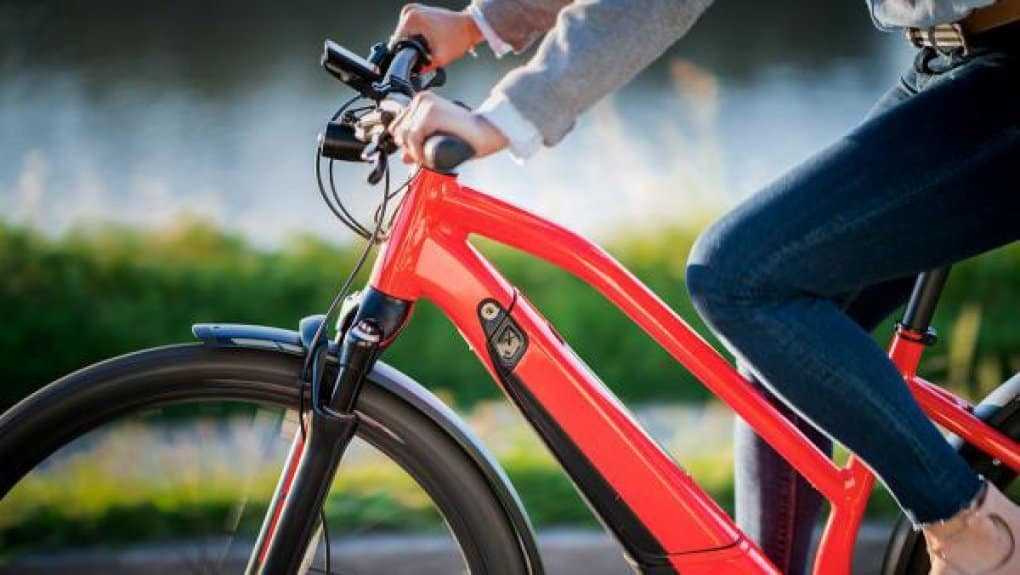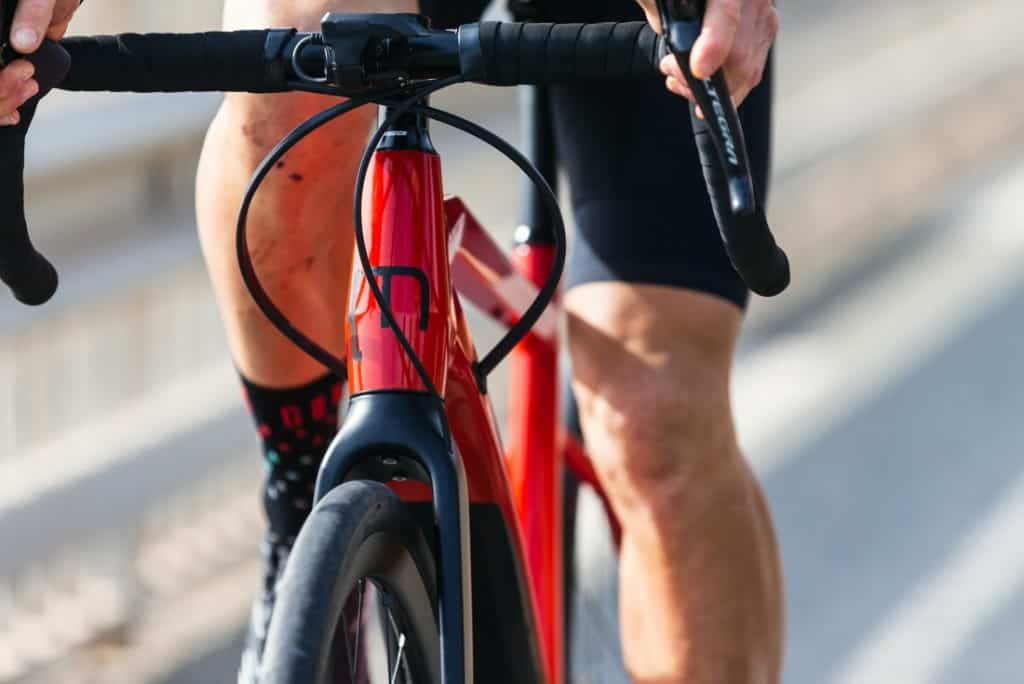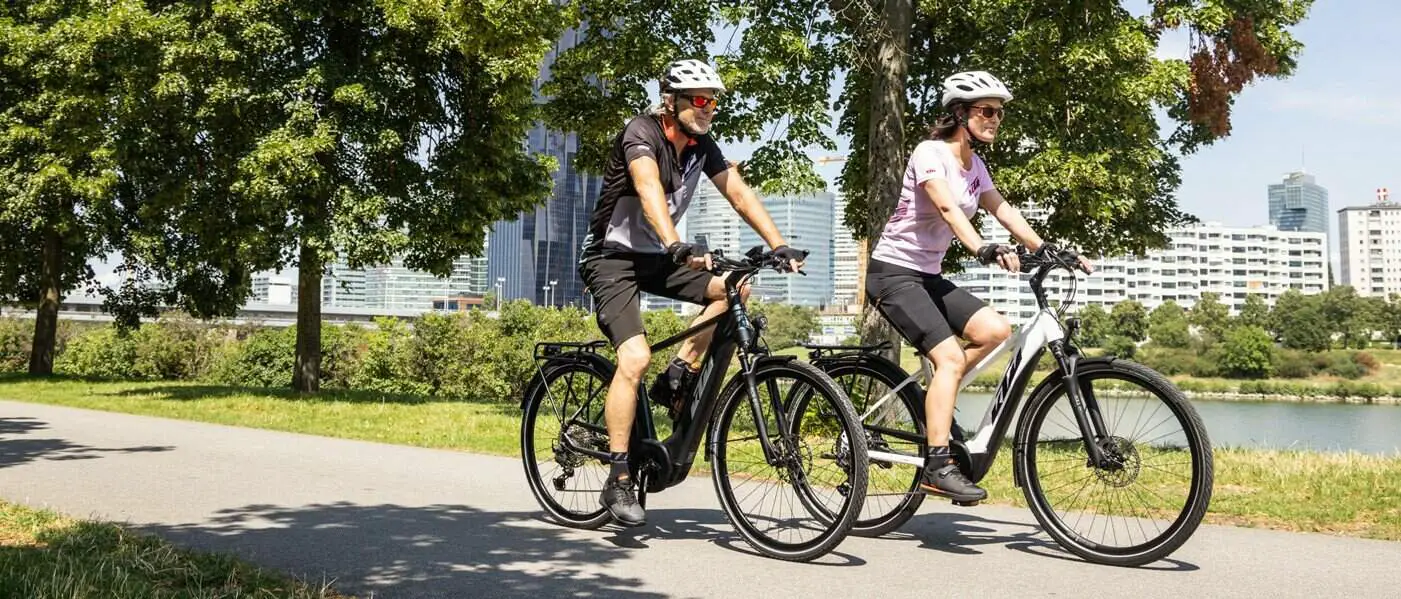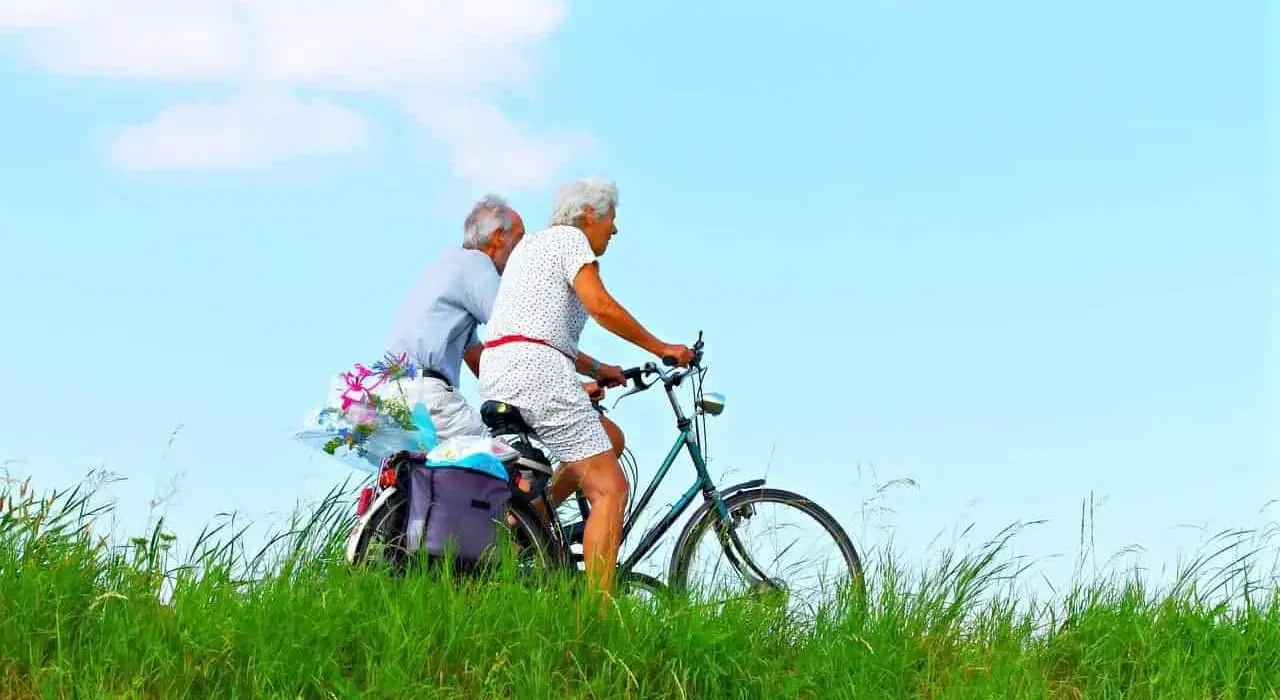Last Updated on June 2, 2022 by Igor Karni

Though e-Biking has a huge variety of benefits and is especially optimal for riders who are dealing with any type of physical barriers or conditions, it is often common to deal with soreness and pain in certain parts of the body after riding.
The five main areas that are affected when riding an e-bike include the hips, neck, back, knees, and hands/wrists. Since e-Biking requires certain muscles and joints to work extra hard or bear the brunt of weight and pressure, there is a higher likelihood of experiencing discomfort in these areas. That said, recurring pain and soreness can be decreased and even diminished through various efforts and adjustments.
Read also: Which muscles work when riding an electric bike? And, How does riding an e-bike change your body shape?
This article will discuss these five main types of pain, and how e-Cyclists can easily mitigate and manage these issues for more comfortable and painless riding!
How to prevent and cure hip cycling pain
Hip pain related to e-Biking can be related to specific muscles in the hips either being underused or overstrained.
The main muscles that affect hip pain are the hip rotator, or piriformis, muscles, which is small muscle located deep within the gluteal area (source). The piriformis muscles, which help to rotate your legs in an outward motion, are not typically used while e-Biking since the hips remain in a stationary position while cycling.
It is because of this factor that the piriformis then is at risk of becoming weaker and shorter, and therefore more easily fatigued, causing the hip rotators to tighten and then lead to pain in the backside and hip area. This can also put additional pressure on the sciatic nerve (source), which can lead to further leg and hip pain.

If you have an overly bent posture while riding your e-Bike, this can also put additional pressure on the hips, specifically causing tightness in the hip flexor muscles. Tightness in this region will cause the upper body to overcompensate, and thus put a strain on the lower back and hips.
The main way to overcome hip pain is to ensure that your hip rotators, hip flexors, and glutes are stretched properly. Regular stretching can help strengthen these muscles, which will help decrease the possibility of fatigue and strain.
Read also: How to select the right electric bicycle size? And, Which electric bicycle to buy? Making your educated e-bike selection choice.
E-Bikers can accomplish this by stretching regularly before and after rides, or at least twice a week. As well, it is recommended that riders increase their mileage and distance on e-Bikes gradually, as opposed to going at an intense rate too quickly, as this can potentially lead to damage or pain in the hips.
E-Bikers should also take a look at their handlebar positioning to make sure one’s body does not exceed the range of hip flexion when reaching the top of the pedal stroke. Your saddle height should also be high enough to ensure that you are not bent too far forward while riding, as leaning too far forward can put pressure on the glutes.
For further details on how to prevent and cure hip cycling pain check out this article and this article.
Hot to prevent and cure cycling pain in hands and wrists
Having sore hands and wrists as a result of riding an e-bike is another common side effect of riding often, but is certainly one that should not be ignored.
The main part of the hand and wrist area that is affected is called the ulnar nerve, a nerve that runs from the wrist to the shoulder (source). Ulnar neuropathy is a related condition that many cyclists deal with, and is the result of the direct pressure that riders put on their hands while gripping their handlebars.

Jarring road vibrations from the uneven and bumpy ground can also lead to wrist pain, as well as keeping one’s hands in the same position throughout the entire ride. Some ways to deal with road vibrations are investing in padded gloves and handlebar tape, which will help to absorb shocks and thus soften the impact of handlebar vibrations. Shock-absorbing accessories will help to decrease the chance of wrist and hand soreness.
Another factor to look into is the way your body is positioned while you are e-Biking. It is important to ensure your saddle is not positioned too high, as this will cause you to throw your weight forward too much and rest too much of your weight on your hands and wrists. Having your handlebars too low will also result in this same issue.
Read also: Can e-bikes help climb steep hills? And, How safe are electric bikes?
A few good indicators of making sure you have proper positioning on your e-Bike is by being able to ride with your hands on lightly resting on your handlebars, as opposed to resting heavily on them. One other factor to keep in mind is that you should have your shoulders, hands, and elbows relaxed and avoid over-tightening your grip on your bars.
You should also ensure that you are regularly stretching your wrists and hands, as stretching will help to strengthen these muscles, and therefore decrease the risk of overuse or injury. An example of a simple hand and wrist stretch is the “praying position” stretch.
For further details on how to prevent and cure cycling pain in the hands and wrists check out this article.
How to prevent and cure knee cycling pain
Constant force exertion is often the culprit behind knee pain, as the knees are constantly working when riding an e-bike. Consistent and repeated stress is often the result of riding at too high an intensity for your body, and if you are riding with improper positioning, this can cause a muscular imbalance in your legs and can thus cause knee pain.
However, riders should bear in mind that this is why features like pedal-assist are so great because the electric assistance can take a lot of pressure off your joints and muscles that tend to get overworked!

In particular, it is the patella and iliotibial (IT) band that is most affected when riding an e-bike (source, source). One of the common ways IT bands are affected negatively is when cyclists pull their knees too tightly toward the top tube of their e-Bike frame. The patella, or kneecap, is most commonly affected when any tightness or weakness occurs in the surrounding muscle area, which can result in its improper positioning while riding, potentially leading to inflamed cartilage.
A common suggestion to take some of the constant force exertions off the knees is to ride at a higher RPM and lower gear resistance, thus having less weight resistance pushing against your knees. It is also important for e-Bikers to remember that electric assistance can be increased if you are feeling too much pressure on your knees while riding.
Read also: Does riding an e-bike help train strength and endurance? And, Are electric bikes good for cardio exercise?
Some e-Bike adjustments one should also look at including the saddle height, which, if too low, maybe cause too tight a knee angle while pedaling, and crank length, which, if too long, can cause excessive knee flexing and overextension.
Riders should also ensure that they are regularly doing the appropriate stretches to help strengthen the knee and leg muscles. Riders should specifically target their quad, hamstring, gluteal, and IT band muscles when it comes to strengthening techniques, as strengthening these areas will help to decrease the risk of knee pain and injury, and ultimately will help improve joint health and range of motion.
For further details on how to prevent and cure knee cycling pain check out this article.
How to prevent and cure neck cycling pain
Neck pain is almost always linked to upper back and shoulder pain, with some of the most common causes being related to improper posture and weak muscles.
It is precisely the bent over, flexed, and static positioning while cycling that tends to lead to additional stress and pain in the neck. Since the back, neck, shoulder, and core muscles are being kept relatively in place while riding, it is the lack of blood flow in those particular areas while riding that leads to tightness in the muscles. Tightness, then, often leads to pain and soreness.

As is the case with the various other types of pains related to riding an e-bike, riders must examine how they are positioned on their e-Bike, and how their e-Bike, in turn, is fit to their own height and stance.
For example, having one’s handlebars being positioned too low can result in having to reach too far to hold on to the bars, and thus can create a hunching position in the neck and back. This can lead to hyperextending the neck muscles, which can ultimately even negatively impact one’s spinal alignment.
Read also: Are electric bikes cheating (backed by research)? And, Are electric bikes good for fitness?
This is why it’s important to ensure that the handlebars are kept high enough so that you can keep a relaxed grip and relatively straight-backed posture while riding. In order to avoid far reach, the handlebars can also be brought closer to your body. When determining handlebar and saddle height, they should more or less be in line with each other for optimal comfort and muscular balance.
One’s e-Bike seat can also be lowered slightly and should be optimized so that proper leg extension is occurring when completing the pedal stroke.
And finally, one should ensure that they are properly stretching their neck before and after riding to avoid tightness and to ensure that the neck muscles maintain strength and flexibility.
For further details on how to prevent and cure neck cycling pain check out this article.
How to prevent and cure back cycling pain
E-Biking related back pain is usually a result of poor posture, improper e-Bike fit, and a lack of strengthening of certain muscles in the body.
For example, it is typically those who suffer from weaker core muscles that experience more frequent back pain (source), as it is one’s core (stomach, lower back, and sides of the torso) which are in charge of helping your body balance while you are cycling.

Thus, having a weak core means that your muscles will become exhausted more quickly, and in turn place unnecessary stress and strain on your back (and lower back, in particular).
Another thing to take a look at is the way you are seated while e-Biking: bad posture will almost definitely lead to back pain in the upper and lower back areas. If you are too bent over when you are riding, this will place pressure on your shoulders, neck, and upper and lower back.
If you are lacking flexibility in the core and back area, as well, this can often contribute to pain. When a rider has a limited range of motion in these areas, sitting on an e-Bike ride for long periods of time can stretch and force muscles to work that are not accustomed to it, and can lead to overstraining.
Read also: How far can e-bikes go? What is e-bike range on a single charge? And, How fast are e-bikes?
Ways to mitigate this type of pain are to regularly stretch the back muscles in order to improve flexibility and to strengthen the core muscles to decrease the chances of overstraining the lower back.
It is also highly recommended that e-Bikers build up intensity and mileage slowly during their rides, as going too intense too quickly can shock the muscles and make the recovery process much slower. Be sure to make use of the pedal-assist feature when necessary, to avoid overstraining and long recovery times.
Riders should also keep their weight distributed between the chest and arms, and maintain an upright posture while riding. It is also imperative to have a proper e-Bike fit, with proper saddle and handlebar height to keep you from bending forward too much.
For further details on how to prevent and cure back cycling pain check out this article.
A few words in conclusion
As you can see, there are many factors that coincide with these types of pain, especially when it comes to addressing and solving the issue. All of these types of pain are often correlated with e-Bike positioning, one’s own posture, and positioning while riding. They can also depend on the maintenance of a regular strengthening and stretching regime.
Once you pay attention to the way your muscles are working in various parts of your bodies, and which ones are most affected by the aforementioned factors, it will be much easier for you to manage and even avoid these types of pain!
Igor is a sustainable mobility and green energy advocate. His mission for Easy E-biking is to help make electric cycling simple, practical, and fun. Follow him on Facebook and LinkedIn.




